Verdalselva is quiet and calm and got its name from that fact. But you don’t have to go very much further up the valley before there are bigger heights and waterfalls. We wanted more fun, and drove up Helgådalen (the Holy River Valley) in search of a suitable waterfall or two. Then suddenly we saw this:
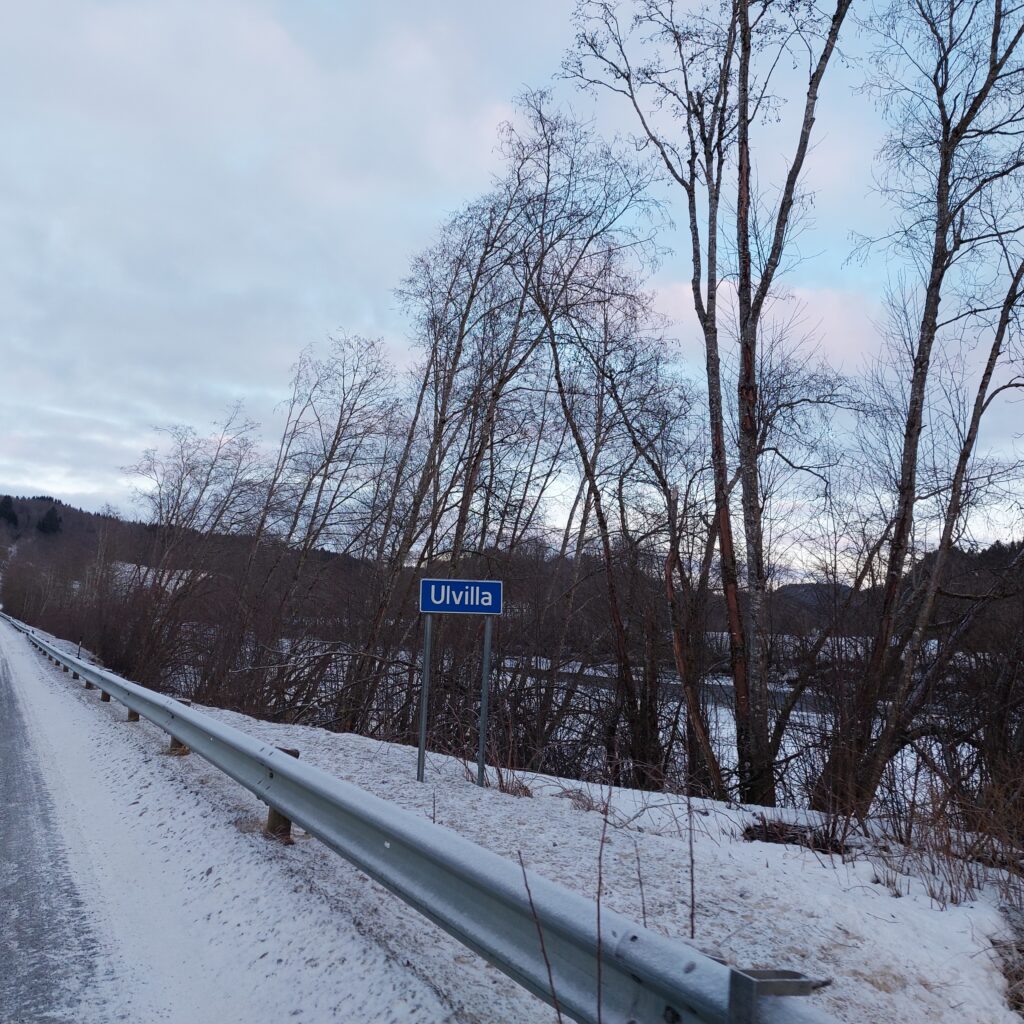
… and that took us back to the heavy duty parties at the Trøndelag countryside in the 80’s, when the song ‘Ulvillavisa‘ was often in the repertoire: ‘Får æ’tj ei pøls, så hoppe æ i ælva, i Ølvilla.‘ (“If I don’t get a sausage, I’ll jump into the river, into Ulvilla!”) Funny! Maybe we could even bathe in Ulvilla, as the song suggests?
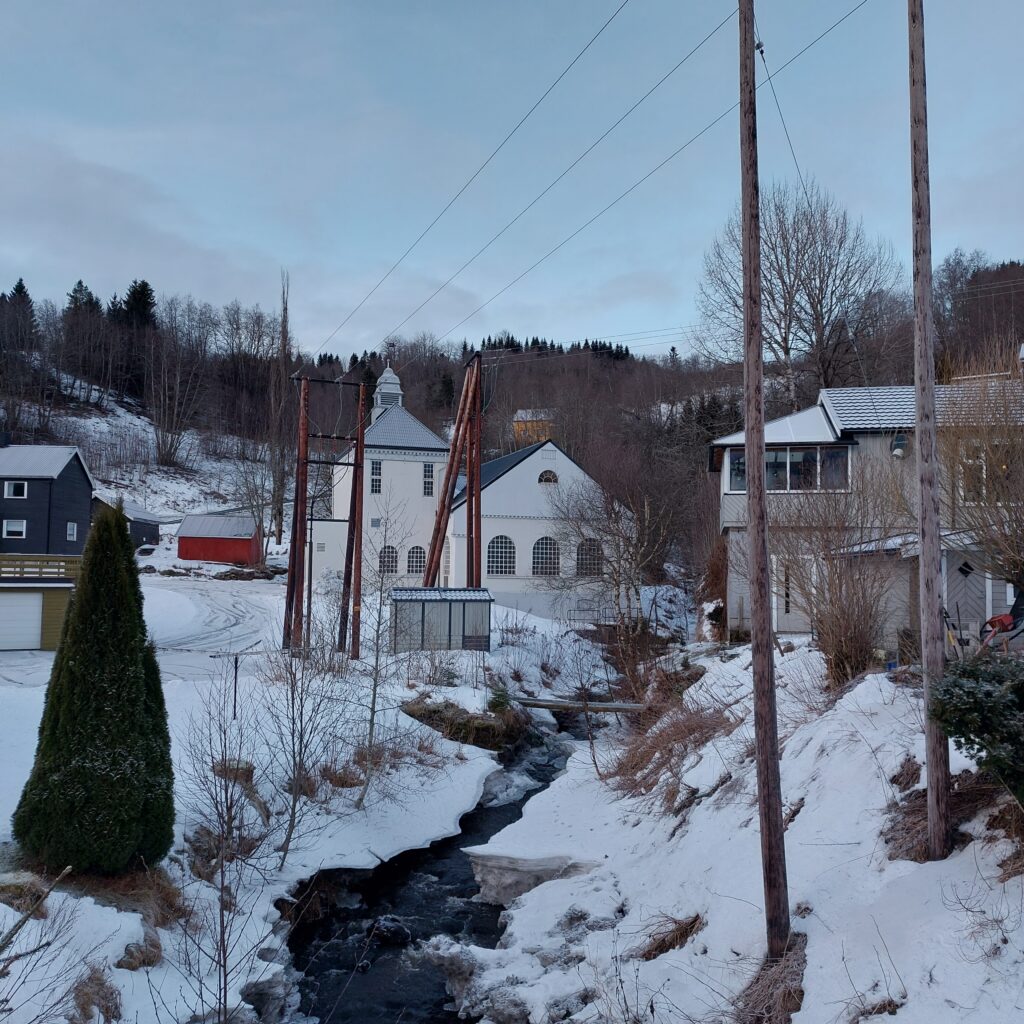
It remained a thought. The lower part of Ulvilla was just not very tempting, so we dropped the bath. But not without protests.
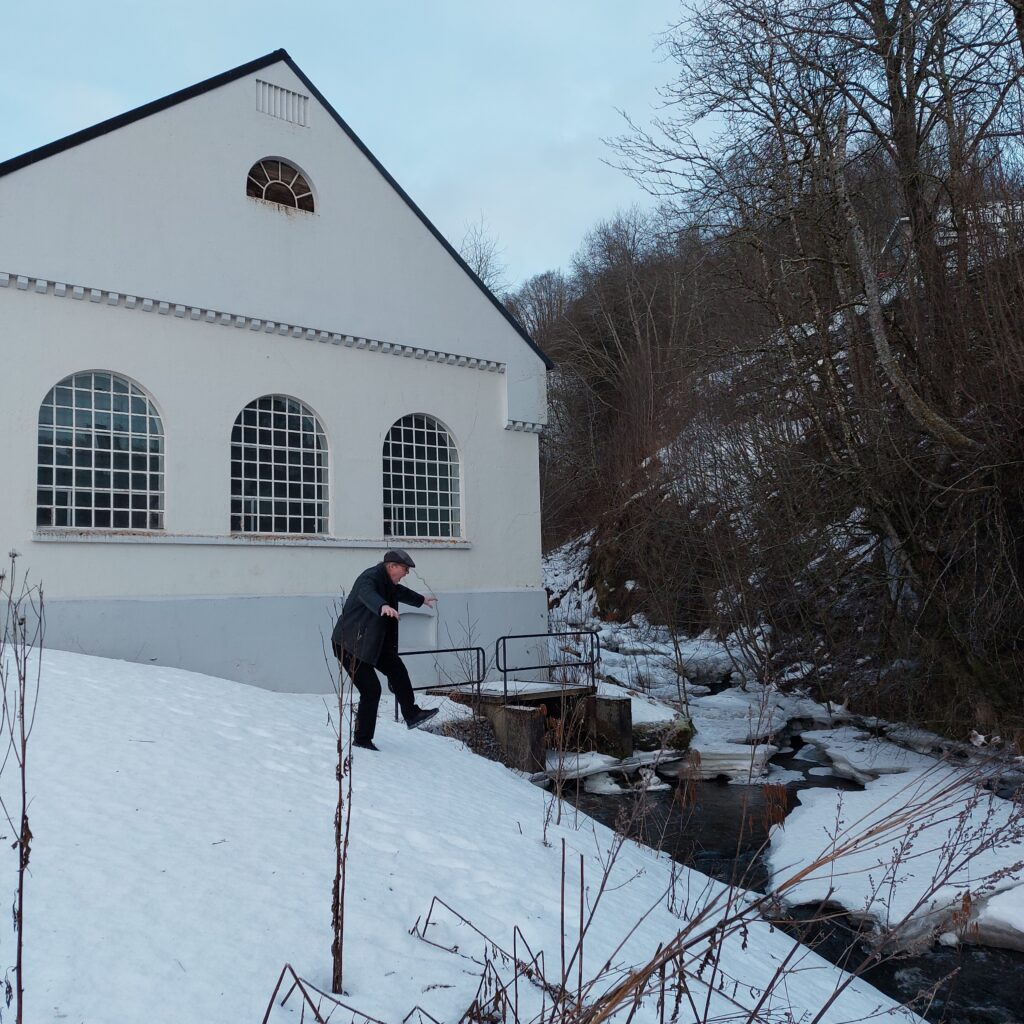
And it’s certainly not a crisis if you skip a bathing place or two in Verdalen. There are plenty to choose from, not least a large number of waterfalls in the rivers Inna, Helgåa and Skjævra. Our next attempt was Granfossen in Helgåa, but it was a bit difficult to access the waterfall with the footwear we had, so we went on to Skjækerfossen.
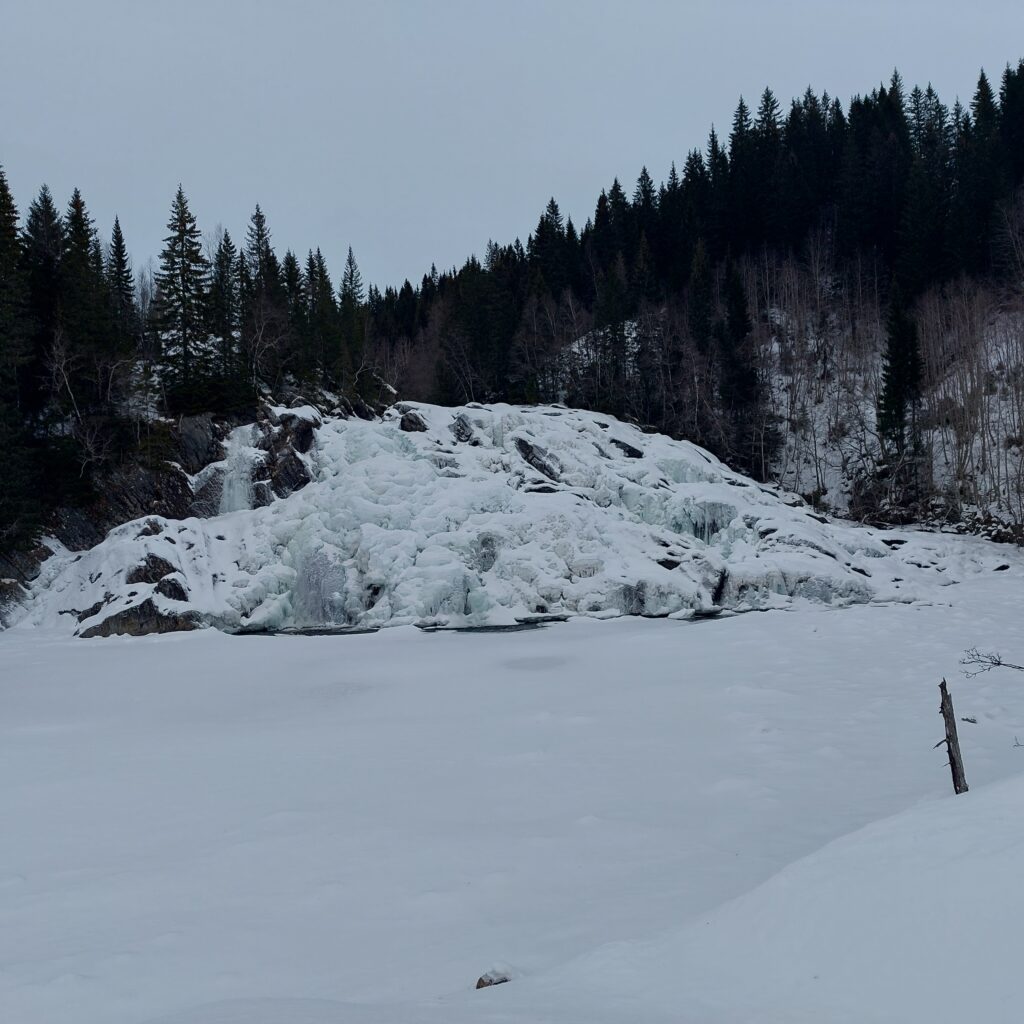
What a place! The waterfall is 22.5 m high, wide and beautiful. And this is historical ground. There used to be furnaces for nickel ore from the Dyråa mines in Skjækerdalen: ‘Værdalens Nikkel og Kobberværk’. The ore was transported to Skjækerfossen by horse in winter, since Dyråa river doesn’t have enough slope to run the smelter cabin’s bellows. The sulfur was removed by burning charcoal, resulting in emissions causing forest death in a 50 m wide area every year. Dead trees were cut to firewood for the smelting process. The nickel was transported by horse carriages to the fjord (at Skånes), a transport that was more expensive than the Skånes-England transport, and therefore greatly contributed to the Verdal nickel industry lasting only 10 years.
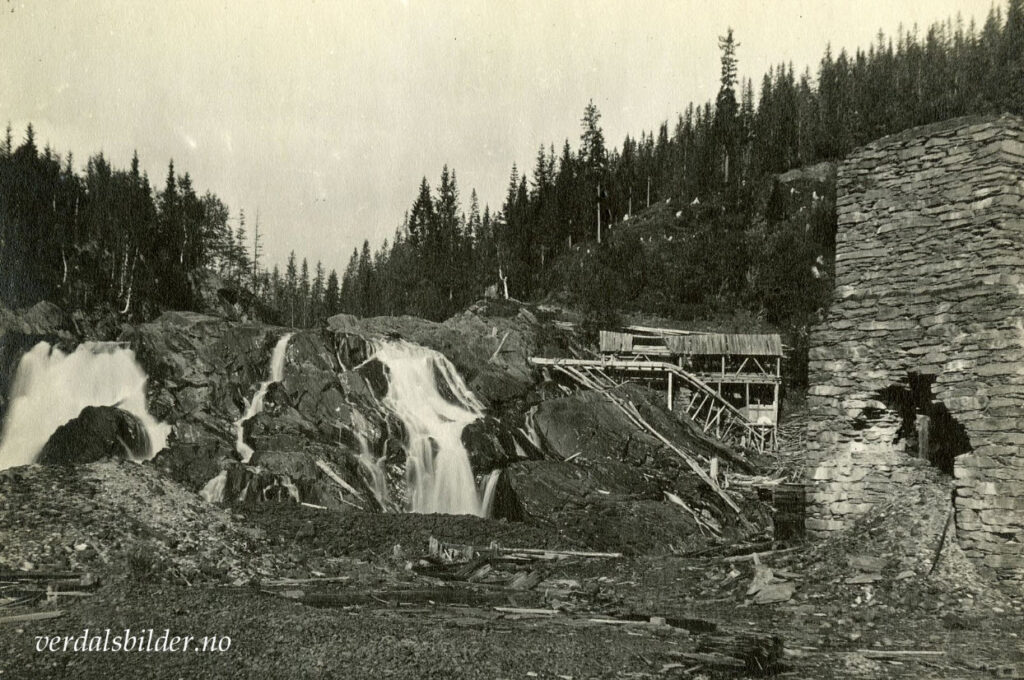
There is also a memorial by the waterfall, honoring the border refugee guides, who saved many lives during WWII. It is estimated that 7-800 people fled to Sweden through Helgådalen during the 5 years of war. None of these routes were ever revealed. The stone was unveiled in 2006.
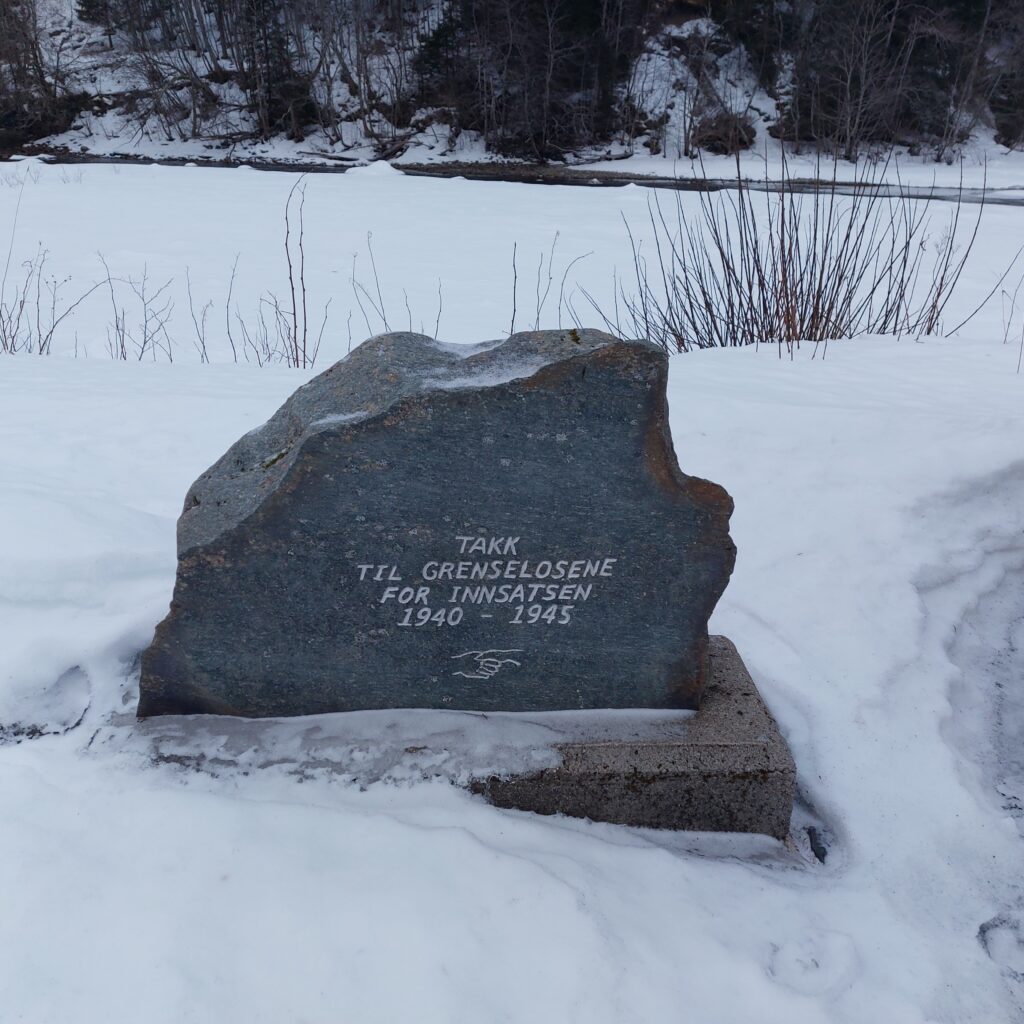
A tent camp was set up at Skjækerfossen in the spring of 1945, as they were looking for 25 members of the Rinnan gang, who tried to flee to Sweden after the peace treaty. Magne Solheim from Målselv arrested Henry Oliver Rinnan at Flyvollen farm on the 14/5-1945. Rinnan was convicted and executed by a firing squad at the Festningen Fortress in Trondheim 1/2-47. Rinnan assisted in the torture of at least 1,000 people, the murder of more than 80, and he was convicted of murdering 13 people.
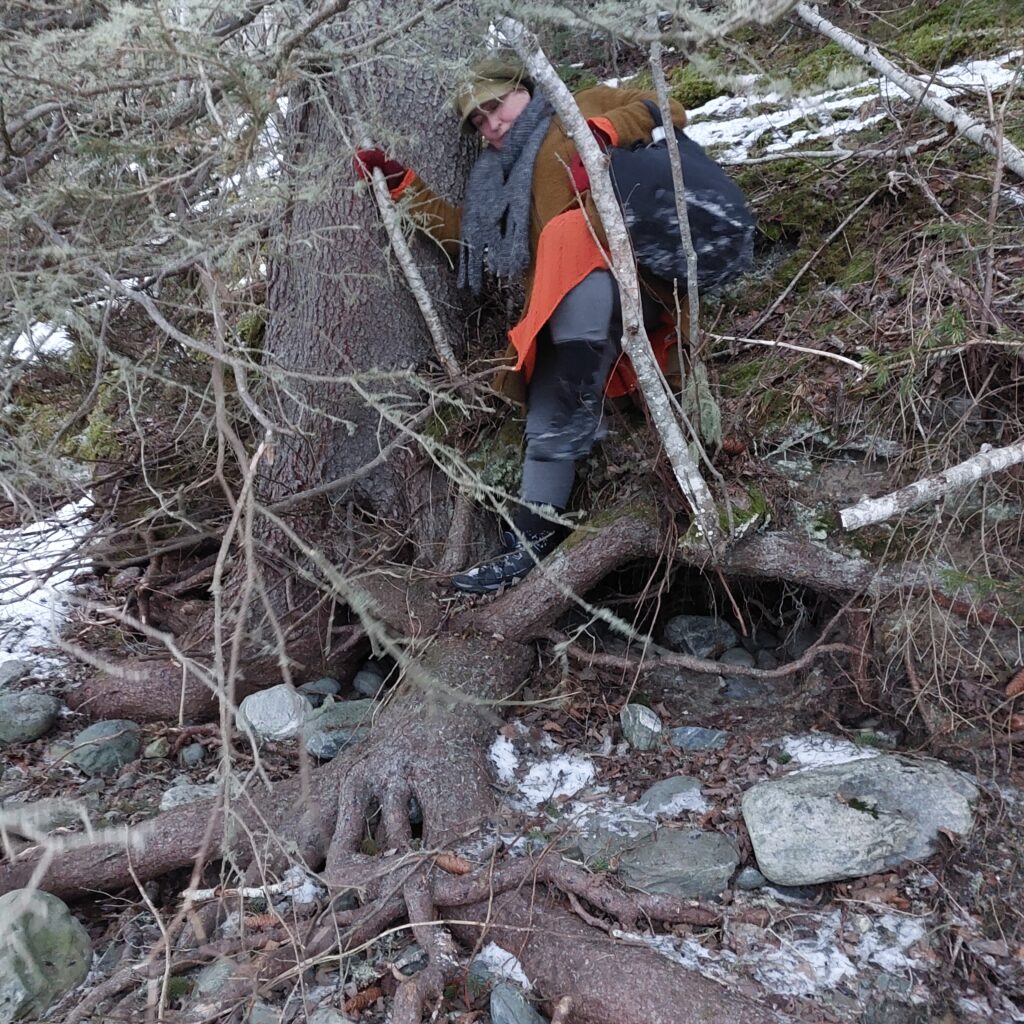
However, we didn’t need a tent – to get a bath. On the other hand, there was a bit of climbing in rough terrain, and as usual we laughed at the idiocy of carrying swimwear in bags instead of backpacks.
But swimming in Skjækerfossen? No, it was too scary for Idun. The waterfall is deep, and Idun was afraid she wouldn’t be able to drag herself back onto the ice. It was therefore only Knut who bathed.
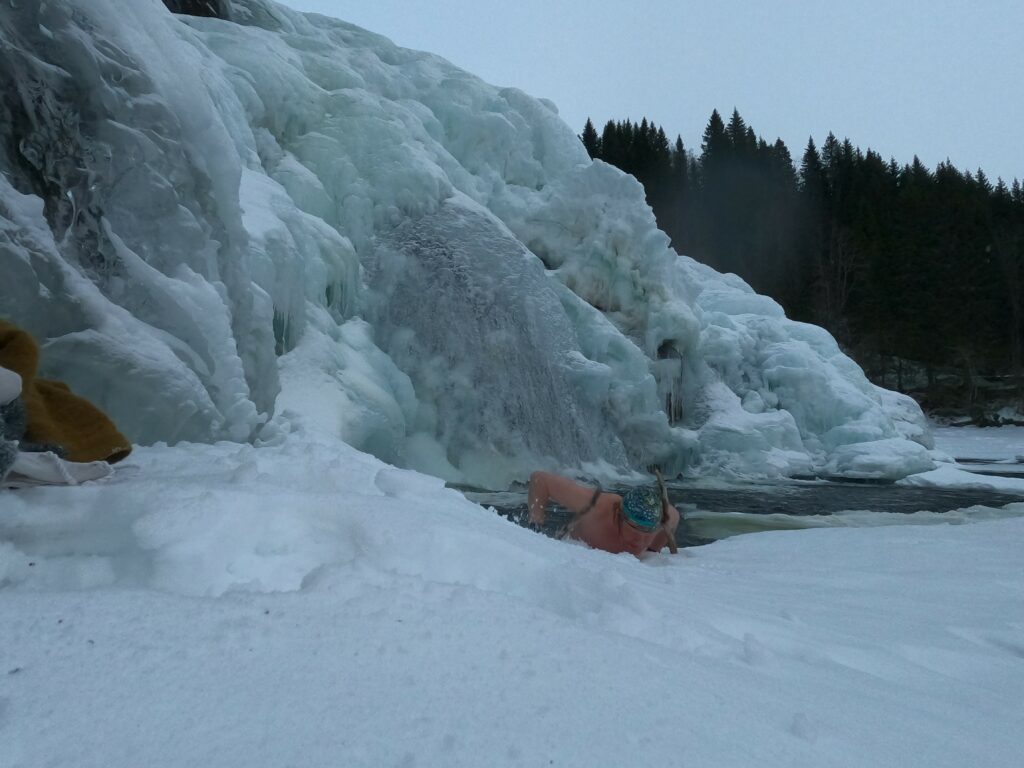
… with subsequent intense discussions about how to solve this problem. What we needed was a ladder, but it is not particularly practical to bring a ladder into the car. The solution: Laider, of course. And we actually had one at home, in Trondheim, which the children got from grandpa and once used in a tree in the garden.
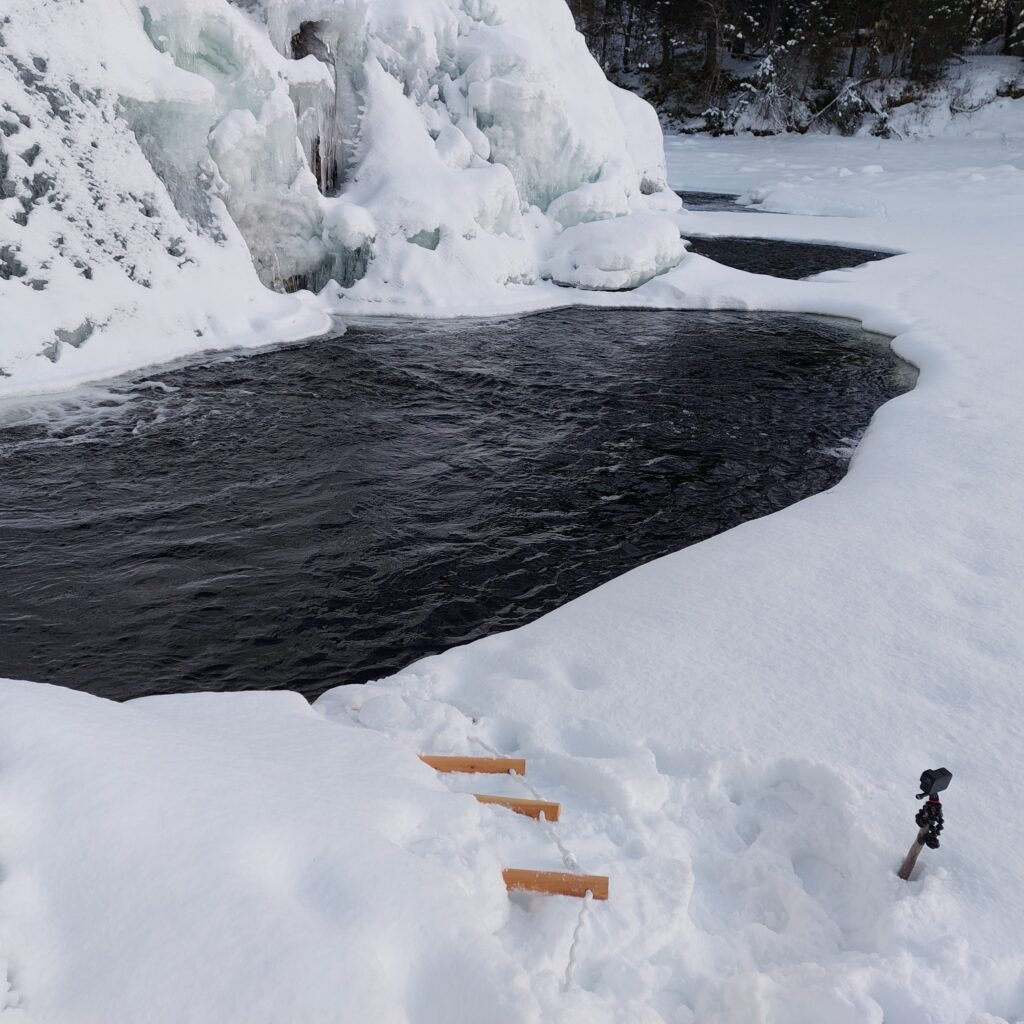
It was great! An absolutely splendid bath. No dangerous incidents of the type of ice falling down (we didn’t swim tight up to the waterfall).
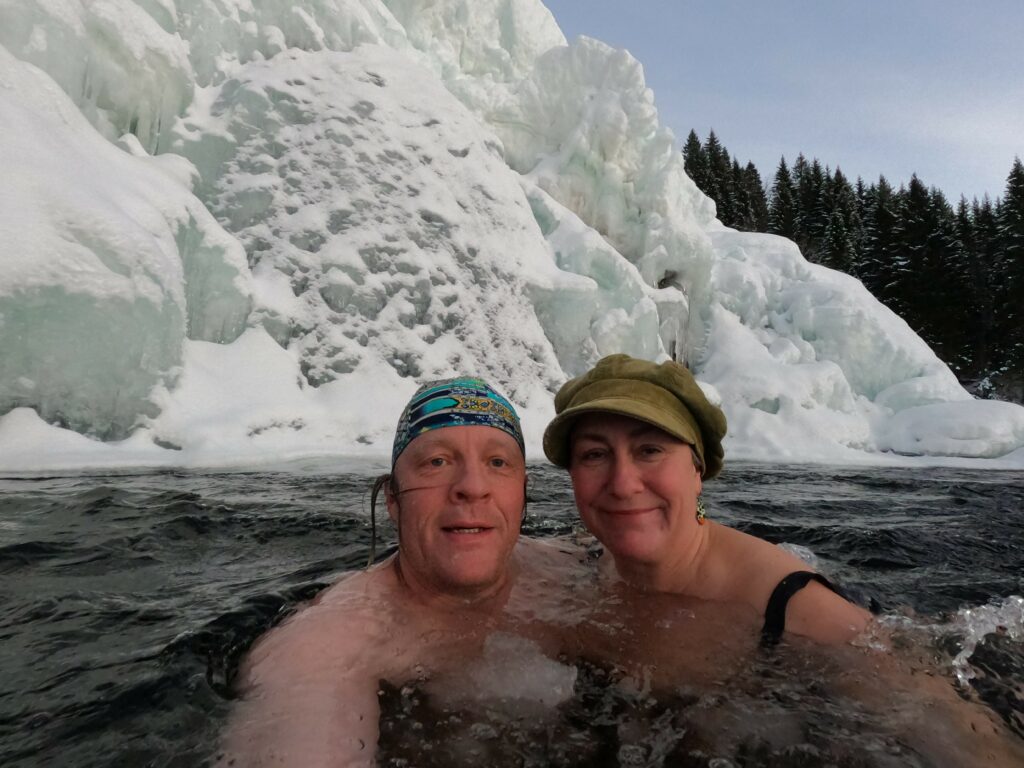
However, the ice is sharp, so a little blood on the knees must be expected. Otherwise, like the Icelanders, we say: ‘Everything was just fine!‘
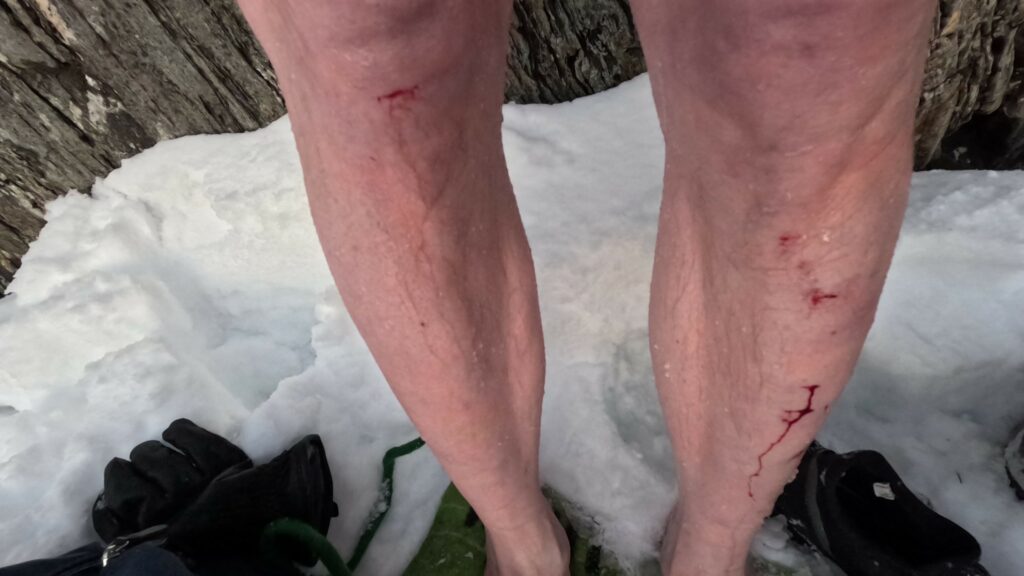
It is quite fabulous to have a bath in Skjækerfossen. Also mid-winter! But of course; the water flow is most likely more impressive in spring and summer.